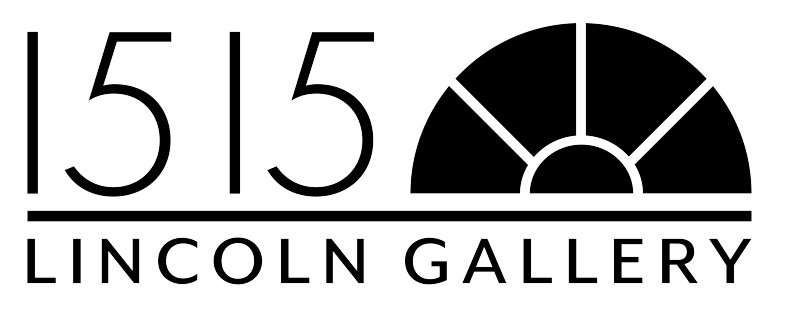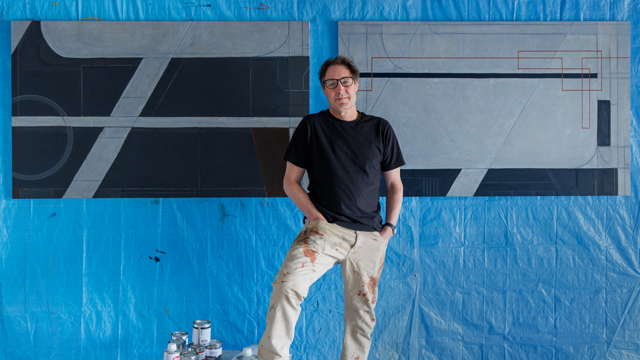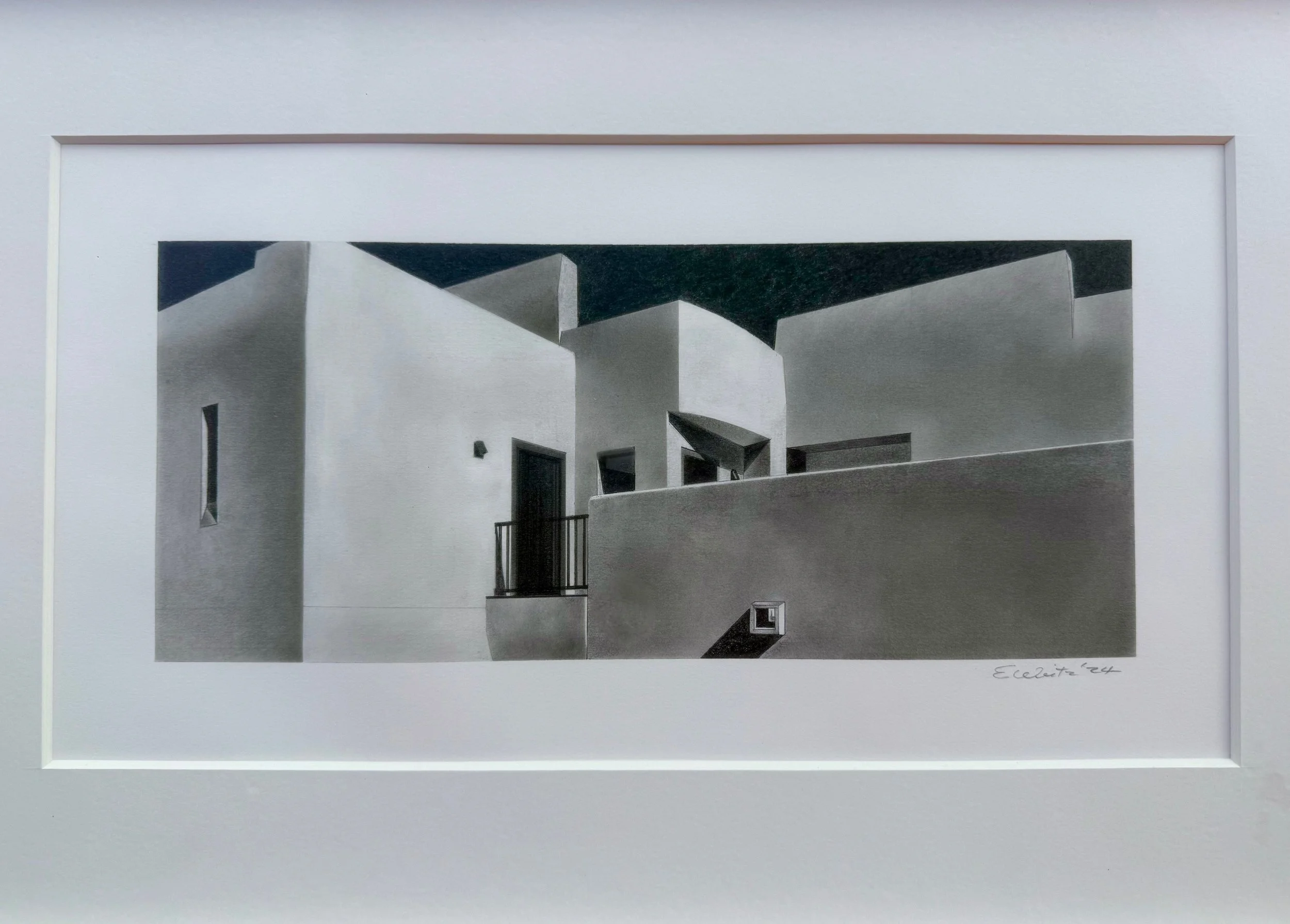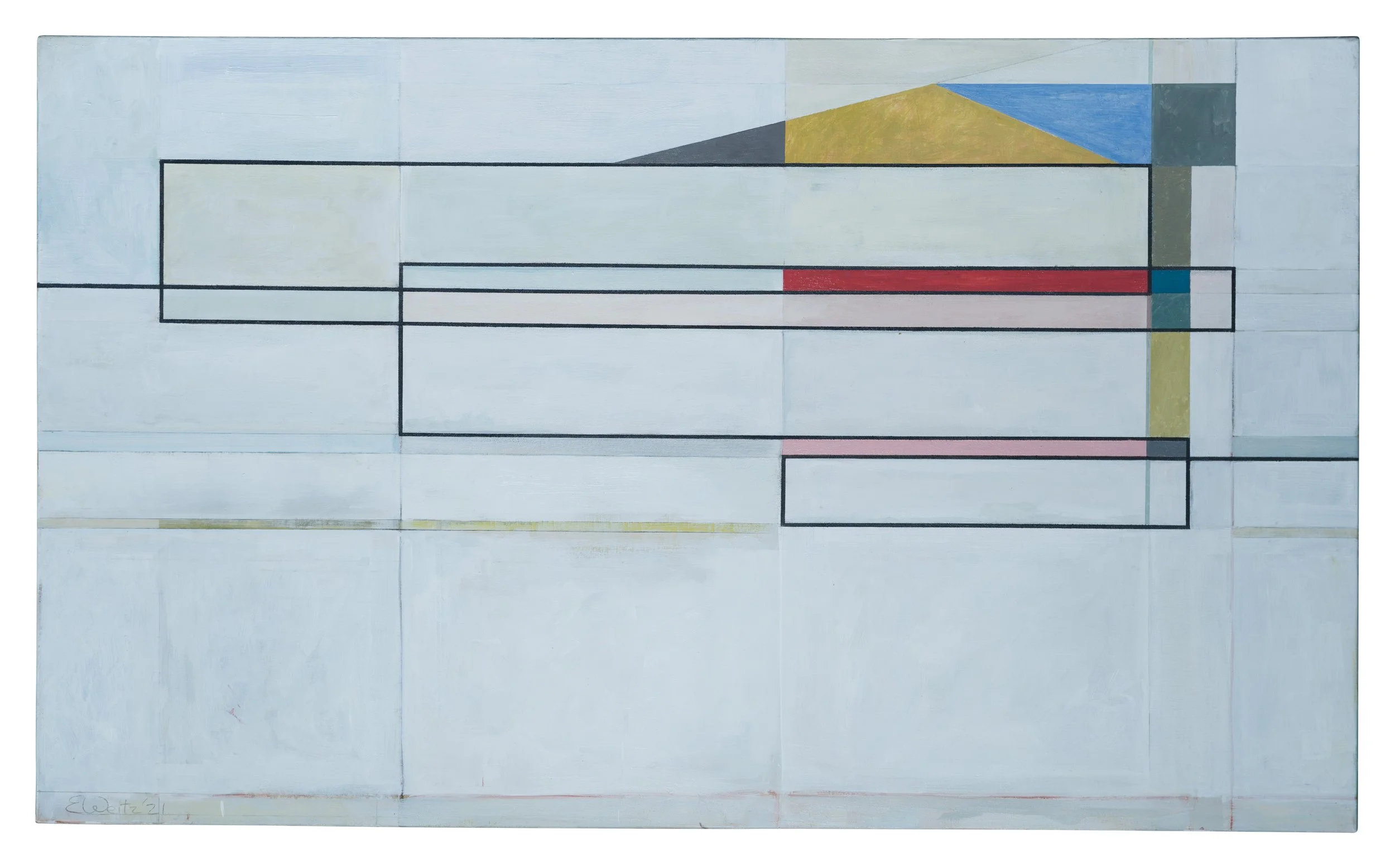Edwin Carter Weitz
"My work explores the boundaries of ideas through diverse visual modes and motifs.”
BIOGRAPHY
Edwin Carter Weitz, an Omaha-based artist born in Council Bluffs in 1963, creates paintings that seamlessly blend figurative, landscape, and abstract styles, each rooted in his dedication to craftsmanship and clear concepts. After a lengthy career in advertising, his journey into fine art began when his wife gave him a box of oil paints, igniting a passion that has since led to solo exhibitions, juried shows, and international acclaim. Inspired by artists like Gerhard Richter and Richard Diebenkorn, Weitz treats each canvas as a chance to explore ideas, blending precision with curiosity to craft works that draw viewers into an experience of beauty, movement, and connection.
ARTIST INSIGHTS
How are your background and life experiences connected to your art?
After years spent in the fast-paced world of advertising as a creative practitioner, I’ve been chasing images and ideas for nearly four decades. To me, whether it's graphic design, ad campaigns, or fine art, it all flows from the same source: the instinct to express visually. This drive has led me to build an eclectic and ever-evolving body of work—one that spans a wide range of imagery, styles, motifs, and conceptual terrain. I'm not loyal to any one medium or aesthetic, but I am fiercely loyal to curiosity. If there's one thing I fear, it isn’t failure—it’s boredom.
Who are some of your biggest artistic influences?
Because I work across a wide range of styles, I’ve always been drawn to artists and designers who’ve done the same with boldness and finesse—think Gerhard Richter’s shapeshifting genius, Ed Ruscha’s conceptual cool, the visionary precision of Laszlo Moholy-Nagy, or the lyrical elegance of Richard Diebenkorn. But my inspiration isn’t confined to the art world. I’m constantly scanning the broader landscape, looking for anything crafted with obsessive precision and purpose—objects, images, or ideas so expertly made they stop you in your tracks. I’m especially intrigued by work that breaks through the noise—whatever its origin—and becomes part of the larger cultural dialogue.
How have you developed your artist career?
Like many artists, my creative path has moved in a steady arc—from representational work to abstraction. But at every stage, I’ve aimed for a consistent level of quality, regardless of style. I’ve sold works across the spectrum, from detailed figurative pieces to expansive abstract compositions. My shift toward abstraction wasn’t sudden—it was deliberate, rooted in a desire to build a solid foundation through years of disciplined work in figurative and landscape painting. Over time, my canvases have grown larger, as has my reach: my work now lives in private and corporate collections across the United States.
What does your artistic work intend to communicate to its audience?
I strive to create art that closes the gap between the canvas and the viewer, whether through sheer visual beauty, the spark of an idea, or the quiet pull of a long-forgotten memory.
Does your work comment on any current social or political issues?
Generally not.
Do you have a particular story that stands out from your career as an artist?
Becoming an artist really started one Christmas morning, when I was well into my forties. After all the gifts had been opened, my wife, Tami, walked over with one last box. She handed it to me and stood quietly, watching. Inside: a set of oil paints. I looked up, puzzled. She smiled and simply said, “I think you need to learn to relax.”
At the time, the relentless pace of the advertising world was catching up with me. That box of paints sat untouched on a high shelf in our bedroom closet for weeks. Then one day, I pulled it down—and everything changed. That quiet gesture cracked something open. The rest, as they say, is history.
What is one thing you would like your audience to know about you?
I believe that there is nothing more human than art.
Which current art world trends are you following?
The rise of urban street art/murals is very interesting. So much of it is mind-blowingly good.
Why have you chosen to sell your work in the 1515 Lincoln Gallery?
What draws me in isn’t just the high caliber of work represented—it’s the entire model of the gallery itself. It feels like a place where people can step inside and feel instantly at ease. There’s something powerful about that kind of environment—one that makes art feel accessible, welcoming, and part of everyday life. I love how it breaks down the barriers, inviting everyone to engage with the work on a personal level.
ARTIST STATEMENT
As an American artist, I am drawn to beauty and precision—the kind of purposeful, skillful creation that stops you in your tracks. My work has evolved over the years from representational to abstract, each phase building on a foundation of technical rigor and visual clarity. Influenced by my background in advertising, I think in terms of series—structured explorations of form, color, and concept. As my canvases have expanded, so has the scope of my ideas. What unites everything is a deep respect for craftsmanship and a relentless pursuit of resonant beauty.
Edwin Carter Weitz in his studio
“What unites everything is a deep respect for craftsmanship and a relentless pursuit of resonant beauty.”
EDWIN CARTER WEITZ’S AVAILABLE ART
“As an American artist, I am drawn to beauty and precision—the kind of purposeful, skillful creation that stops you in your tracks.”







